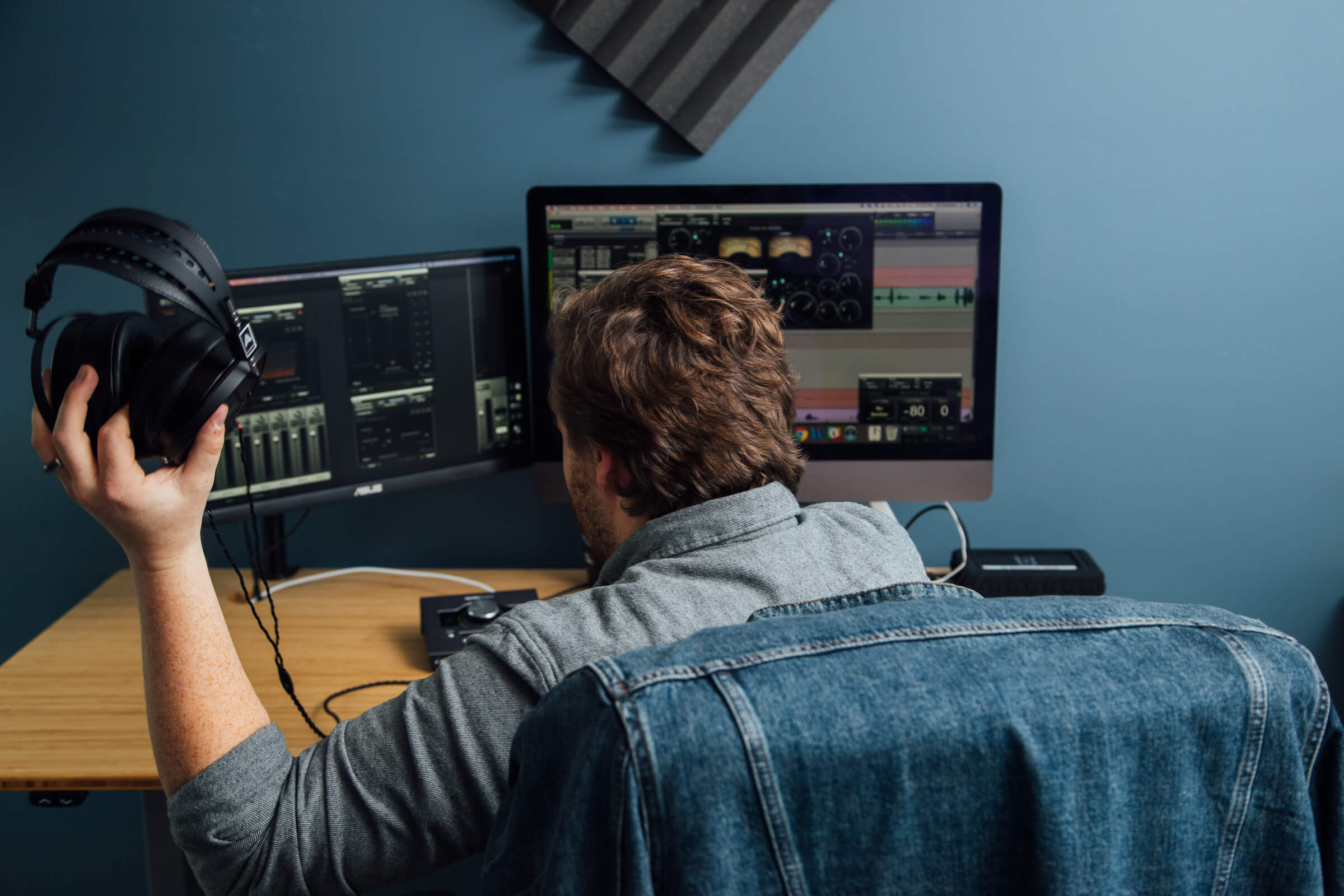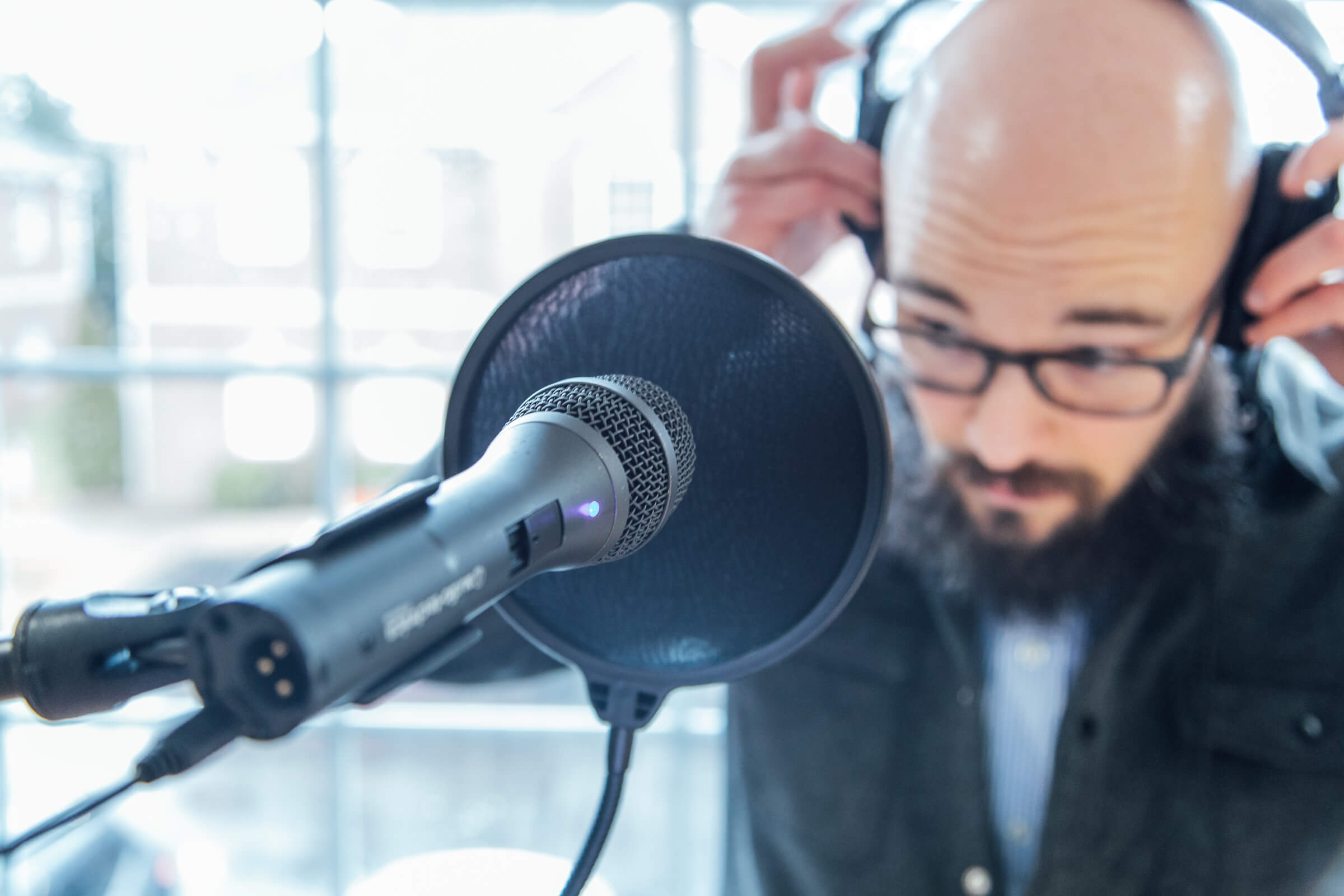While everyone agrees that high-quality audio will benefit a podcast, not everyone can afford to purchase expensive podcasting equipment or to upgrade their current equipment. If that’s you, we have good news! There’s a way to improve the audio quality of your podcast without spending a dime.
By optimizing three parts of your recording process, you can immediately boost your podcast’s audio quality for absolutely free!
1. Recording Environment

Where you choose to record your podcast will have huge implications on the audio quality of your podcast. Environment is everything! In our experience your recording environment can break or make the quality of your podcast recording more than any other single element.
Find a room with as little background noise as possible. When you put on headphones to record, you will be surprised at what may produce unwanted background noise that may make it into your recording. A few common culprits we are too familiar with are HVAC units, highways/traffic, trains, kids, pets, sump pumps, fluorescent lights, external hard drives, computers, fans, and refrigerators, just to name a few. If possible turn off all items with an off switch before you record.
It’s also best to choose an environment with natural sound-absorbing materials such as curtains, carpets, couches, etc. Rooms with hardwood or concrete floors and blank walls may have an unpleasant echo. A good way to test your room to see if it is a good room to record in is to clap your hands and listen for a slap back echo. If you hear an echo then you need to choose another room or move some natural sound dampening materials into the room.
2. Mic technique

Regardless of whether you’re recording a podcast with your iPhone or a ten thousand dollar mic, you can drastically improve the audio quality by optimizing a few simple things around mic technique.
First, experiment with the distance between your mouth and the mic. You generally want to be 3-5 inches from your mic, but every mic has its own slightly different sweet spot. A good rule of thumb is to make a fist with your hand and put your fist between your mouth and your mic. This will be a good starting point distance.
Next, make sure that you don’t bump your microphone stand or your microphone. Even the subtlest bumps on your mic can create a thud or pop sound in your recording.
Lastly, if you don’t already have a pop filter, then you can reduce the likelihood of picking up plosives or pops caused by bursts of air by putting your microphone on a 45° angle and pointing it slightly off-center towards your mouth.
3. Recording Levels & Monitoring

The third piece of the recording process that you need to optimize to improve your podcast’s sound is gain and monitoring systems.
First, you want to adjust the gain of your recorder (or DAW) so that the level of your voice peaks around -12 and -10db. This is a very heavily researched number, but we won’t go into that right now. The main idea here is to leave headroom in your recording to avoid clipping (distortion) and not record so quiet that you have to drastically boost the gain in post-production and end up raising the noise floor (unwanted white noise) of your audio.
Next, you must monitor your podcast in real time. This may sound a little too obvious, but a surprising amount of people don’t take advantage of this tool. If your current recording setup doesn’t have a monitoring system, then you can get around this by recording a short snippet and talking as loud as you think you may speak during your recording. Then play back your test recording and make appropriate adjustments to your gain, mic placement, and all the other factors we mentioned in this post. And while we suggest using high-quality closed-back headphones, any pair of headphones or earbuds is better than not monitoring your recording at all.
Conclusion
So there you have it! Three simple ways to immediately improve your podcast audio quality. Pouring more money into your podcast will undoubtedly improve the quality, but even the best equipment can sound bad if you don’t know how to use it correctly.
Article originally appeared in Buzzsprout.
